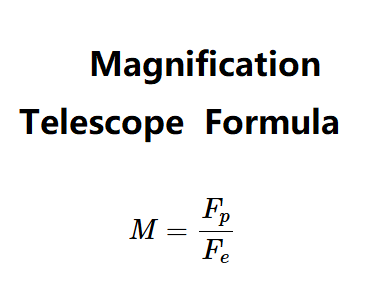 Home
Home
 Back
Back

Definition: The magnification of a telescope is the ratio of the primary focal length to the eyepiece focal length, calculated using the formula:
Variables:
Details: Magnification is a key parameter in telescope design, determining the apparent size of celestial objects, though it must be balanced with resolving power and field of view.
Tips: Enter the primary focal length and eyepiece focal length (in millimeters). Click "Calculate" to get the magnification as a real number. Ensure the eyepiece focal length is less than the primary focal length for positive magnification.
Q1: What is magnification?
A: Magnification is the factor by which a telescope enlarges the apparent size of an object.
Q2: Why is focal length important?
A: The ratio of the primary focal length to the eyepiece focal length determines the magnification power.
Q3: What units are used?
A: Both focal lengths are measured in millimeters (mm).
Q4: What if the eyepiece focal length is larger?
A: If \( F_e \geq F_p \), the magnification will be zero or negative, which is not typical for a telescope.
Q5: How accurate is this calculator?
A: The calculator is accurate based on the given formula and input values, assuming ideal optical conditions.